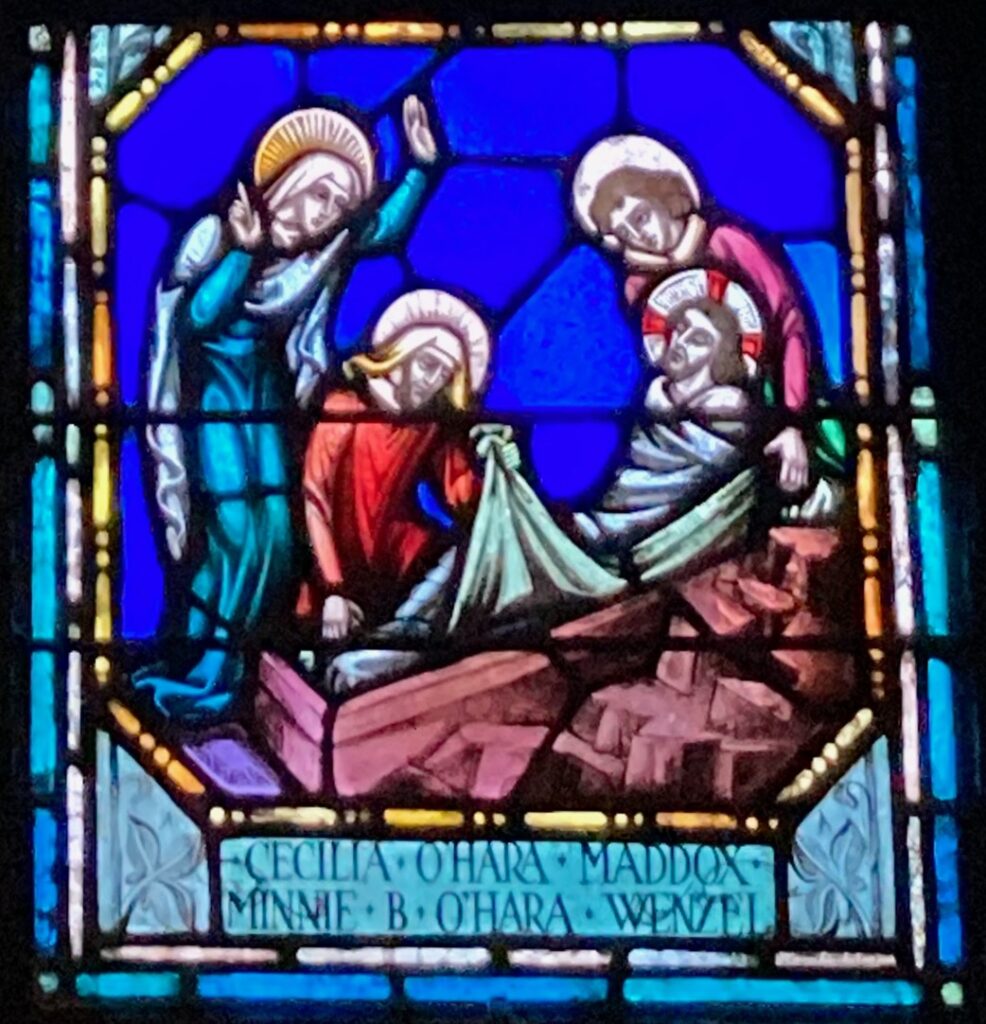
The last Station of the Cross is “Jesus is Laid in the Tomb”. It is also the seventh Sorrow of Mary and is depicted in the widows at the Mary altar in the church. After Jesus had died, Joseph of Arimathea asked Pilate for His body, a brave request; and Pilate gave him permission to take it.
In the widow we see Joseph, wrapping Jesus’s body in the burial cloth and laying it in a new tomb. Scripture describes the tomb as hewn out of rock, which can be seen in the foreground. Mary is present and a younger man is helping Joseph. Perhaps this is John, to whom Jesus had commended the care of His Mother. Or it could also be Nicodemus who brought spices to wrap with the body (Jn 19:39). Mary’s right hand is raised with three fingers curled down and two pointing up. This hand gesture is common in iconography, the three fingers representing the Trinity and the two representing the Divine and human natures of Jesus, perhaps a statement of Mary’s faith and trust in God. Her left hand is raised as if to offer this situation to her son’s heavenly Father. Her hands invite us to faith and trust also.
Jesus’s disciples probably felt confused, abandoned, and hopeless. Their world had fallen apart. Jesus, to whom they had listened, on whom they had depended, who they thought was the Messiah, was now silent. On this Holy Saturday, we know that this was not the end and we wait in silence and hope to celebrate the Resurrection of Jesus. May we pray for the power of Jesus’s Resurrection to penetrate the hopeless places in our world today.